
Bring the world to your backyard with these 10 games
Introduce children to international cultures with these fun competitions from around the globe.
Global sports competitions usually happen far from your child's backyard. But kids can still experience the friendly competitive spirit and cultural diversity by staging their own Backyard Games. Playing games from other countries like the ones below can be a launching pad for learning about different cultures—an important life skill for children.
“As they grow up, kids can develop prejudices,” says Julie Jones, president of the Smoky Mountain chapter of CISV USA (Children’s International Summer Villages), a non-profit dedicated to educating and inspiring for peace. “But when they’re introduced to other cultures early on, they discover that people around the world are all people—who are much more alike than different.”
Let the games begin!
Korbo, or Hoop Rolling (Ethiopia): Get your Backyard Olympics rolling with a hoop game connected to ancient Greece, home of the first known Olympics. The ancient Greeks rolled hoops to build strength; this two-player Ethiopian version boosts throwing and aiming skills. Players alternate as sender and thrower. When the sender rolls a hula hoop across flat ground, the thrower tries to strike the hoop with a ball. Score one point for hitting the hoop without stopping it, and two points for a full stop.
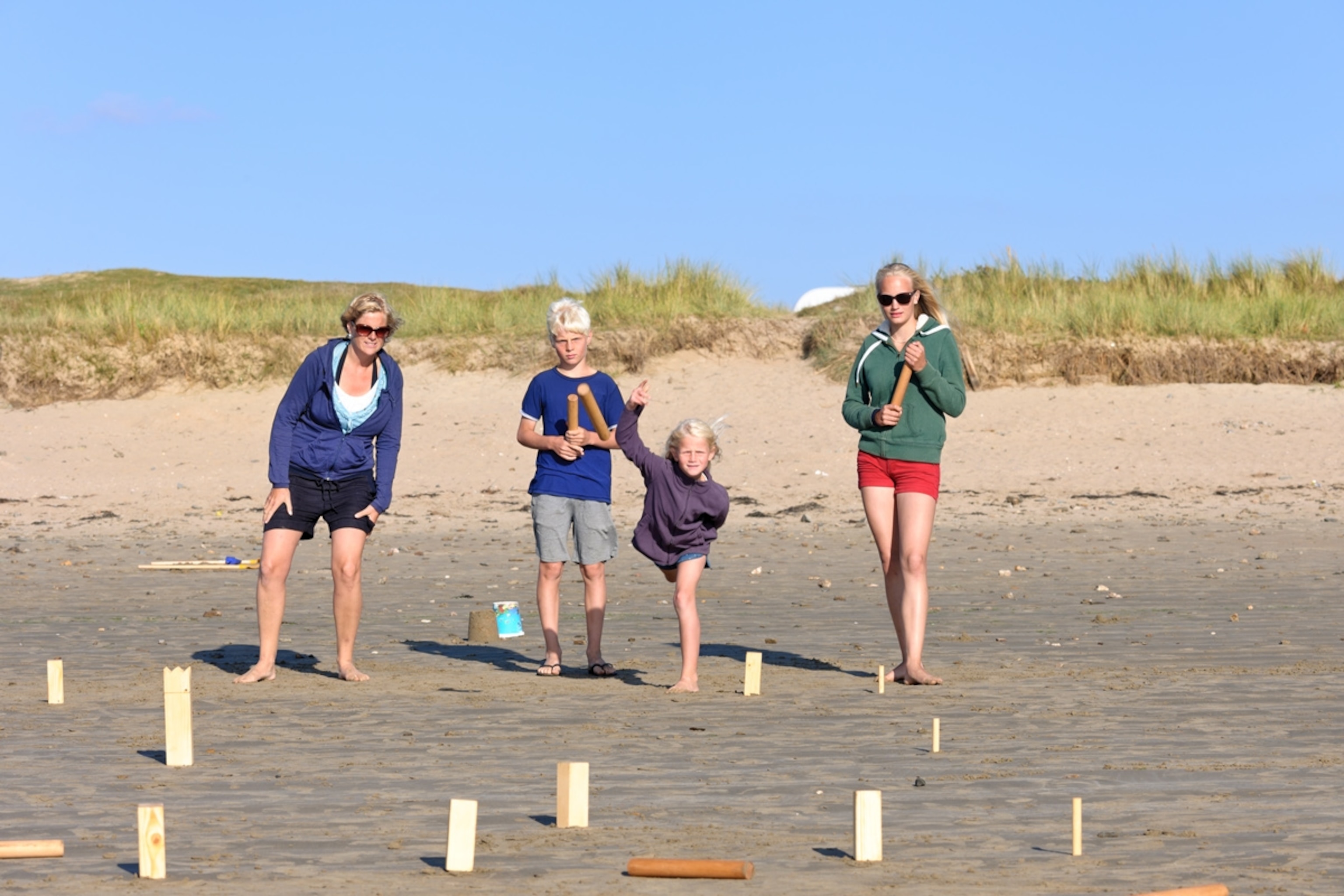
Kubb, or “Viking Chess” (Sweden): Legend has it that Vikings played a version of kubb with skulls and bones. That’s unlikely, but the creepy-cool story is behind this lawn game’s nickname. Traditionally, a kubb set consists of 17 wooden blocks: one four-inch-by-four-inch king, six 12-inch batons, and 10 three-inch-by-three-inch kubbs; but you can improvise with whatever items of varying sizes you have at home. Put the “king” at the center of the field (make the length as far as kids can underhand-toss a baton) and five kubbs along each end. Two teams (one to six people per side) throw six batons per turn, trying to first topple their opponent’s kubbs before knocking down the king. Learn more rules (for instance, fallen kubbs are captured and become defenders) as you play.
(How gymnastics became a deeply beloved Olympic sport)
Keentan, or the Kangaroo Game (Australia): Inspired by the ginormous jumps—up to six feet high—of kangaroos, this Aboriginal run-pass-catch game traditionally was played using a rolled-up hide from a possum, kangaroo, or wallaby. (Today, a soccer ball works just fine.) Split kids into two teams for a fast-paced game of keep-away. The kangaroo connection? Players hop off the ground each time they throw the ball to a teammate, catch it, or intercept a pass. Traditional Aboriginal games aren’t competitive, so everybody wins!
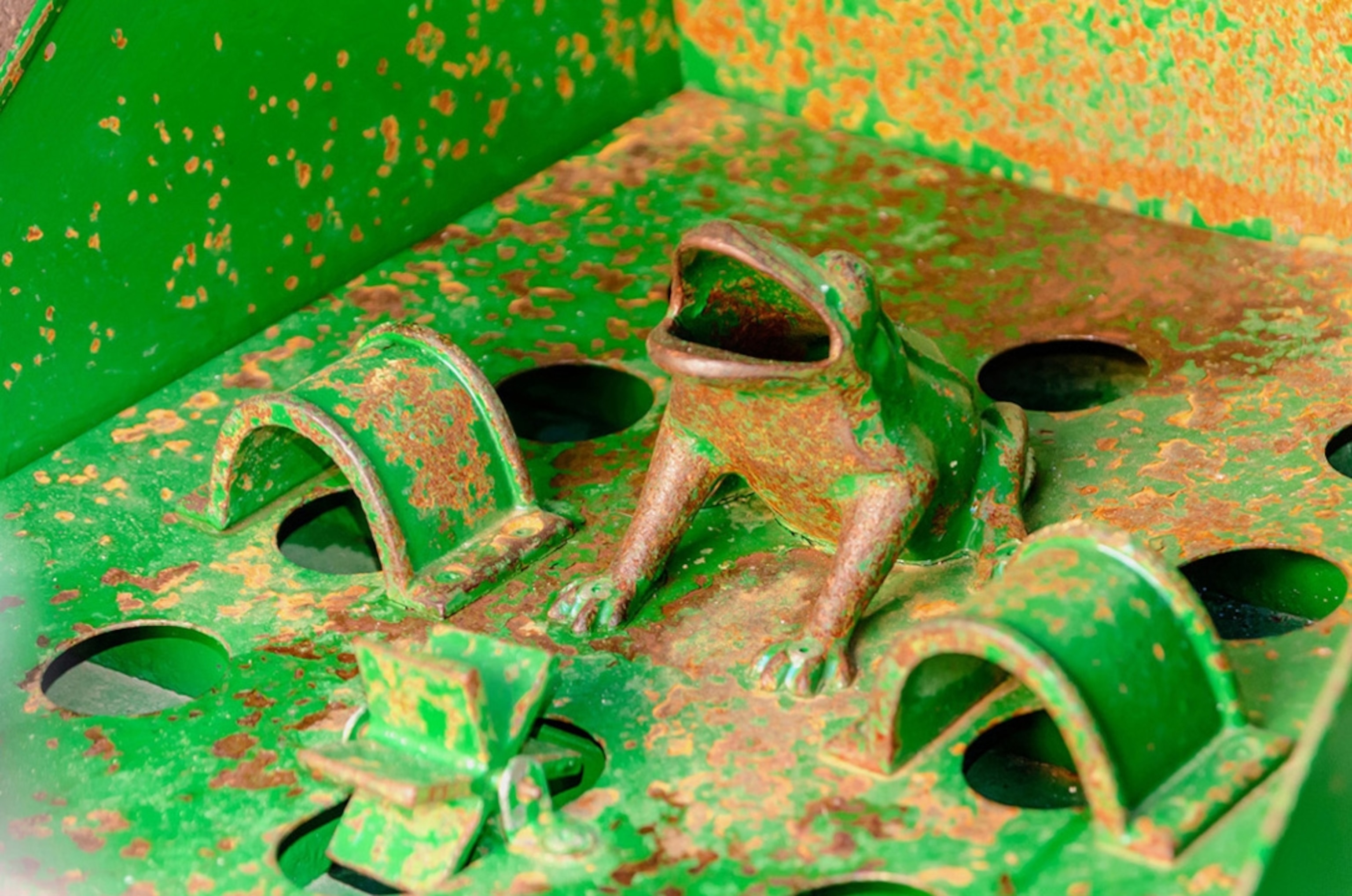
Juego de Sapo, or the Toad Game (Peru): Inca mythology says that toads would turn into solid gold if they caught a gold piece in their mouths. Based on this legend, the ancient game is played on wooden tables with holes and an open-mouthed bronze toad on top. But kids can use an empty shoebox and an empty toilet paper tube decorated to look like a toad. On the lid, cut several quarter-size holes and one to hold the tube. Step back 10 paces and pitch 10 pennies. Earn five points every time the toad “catches” a coin and one point for any toss into another hole.
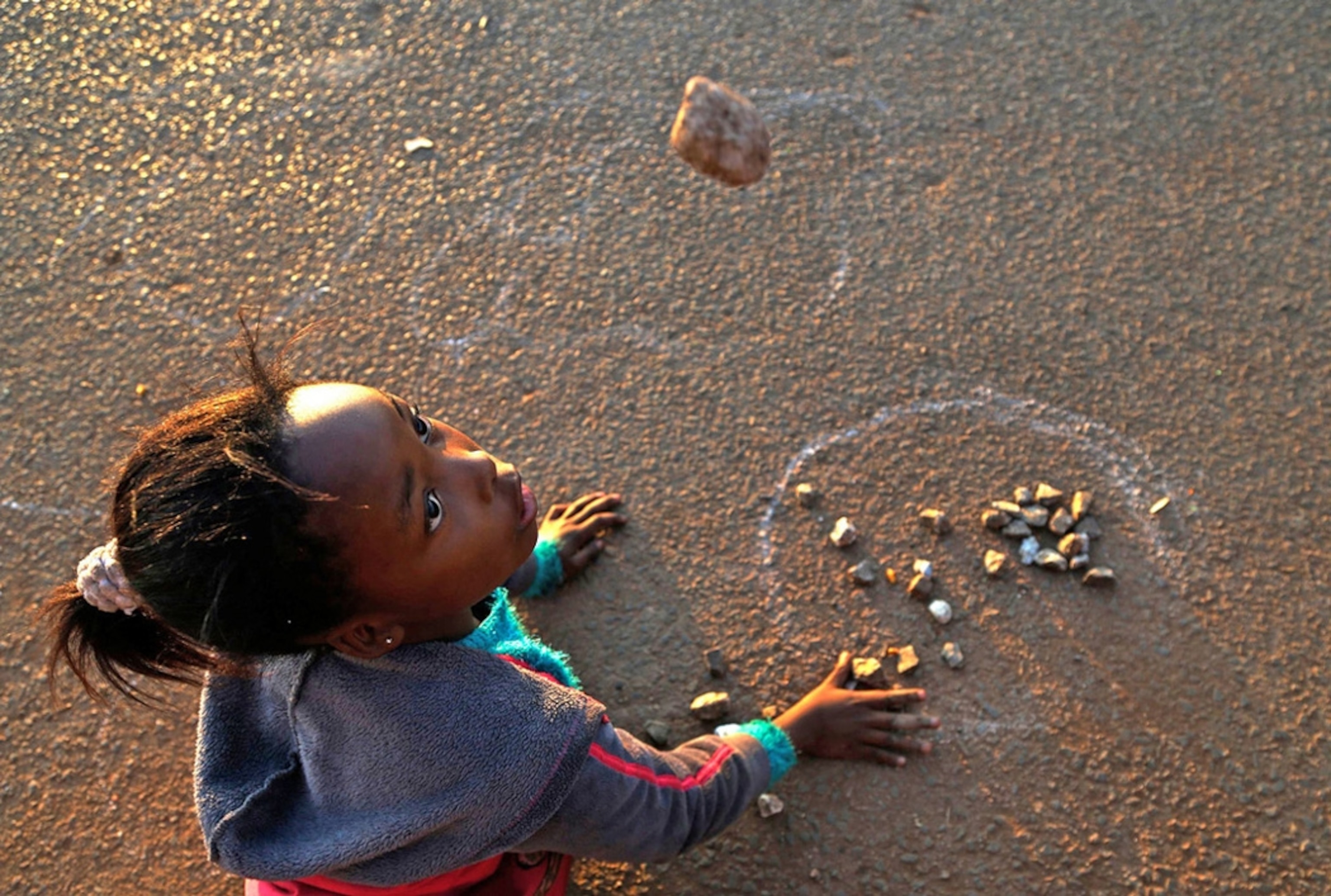
Diketo (also known as Ukugenda and Upuca), or Pebble Throwing (South Africa): One of South Africa’s 10 official indigenous games, Diketo is a two-player contest similar to Jacks. Get 10 small stones (pennies work too!) and a golf ball, then dig a hole two inches deep and six inches wide. Place the stones in the hole, then toss the ball in the air. Before catching the ball, use the same hand to slide out all the stones, set one aside, and push the rest back in the hole. Earn 10 points for successfully repeating the cycle 10 times in a row (which empties the hole), or 1 point for each stone you’ve moved outside the hole before you miss the ball.
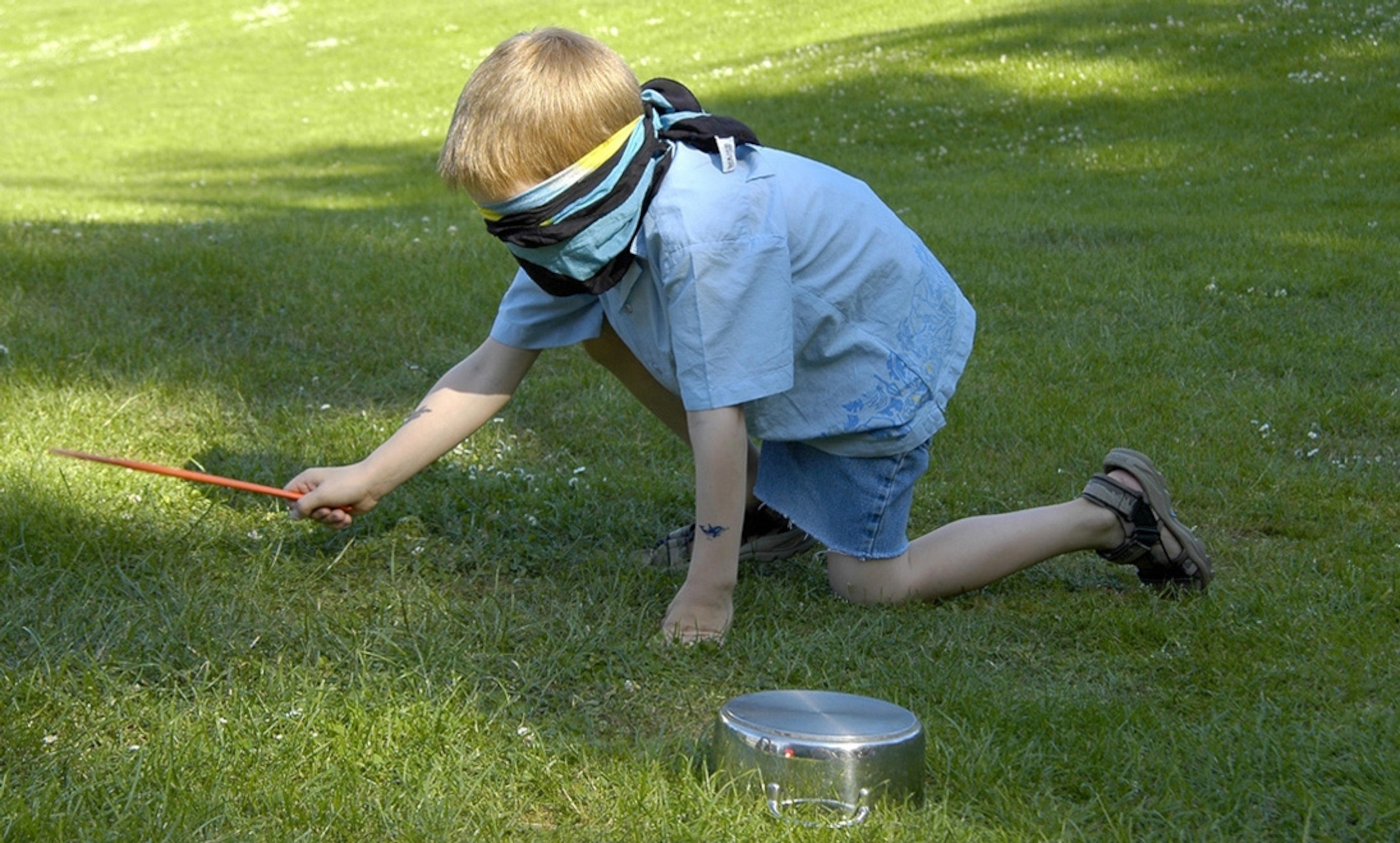
Topfschlagen, or Hit the Pot (Germany): Germany is the world’s top exporter of chocolate, so no wonder this game is based on the sweet reward. Stash some chocolate under an overturned cooking pot. Kids take turns crawling on the ground blindfolded and lightly strike whatever’s in their path with a wooden spoon. (Add soft obstacles like pillows and stuffed animals to make the game more challenging.) When the spoon hits the pot, the chocolate hunter gathers up—or gobble downs—the treasure.
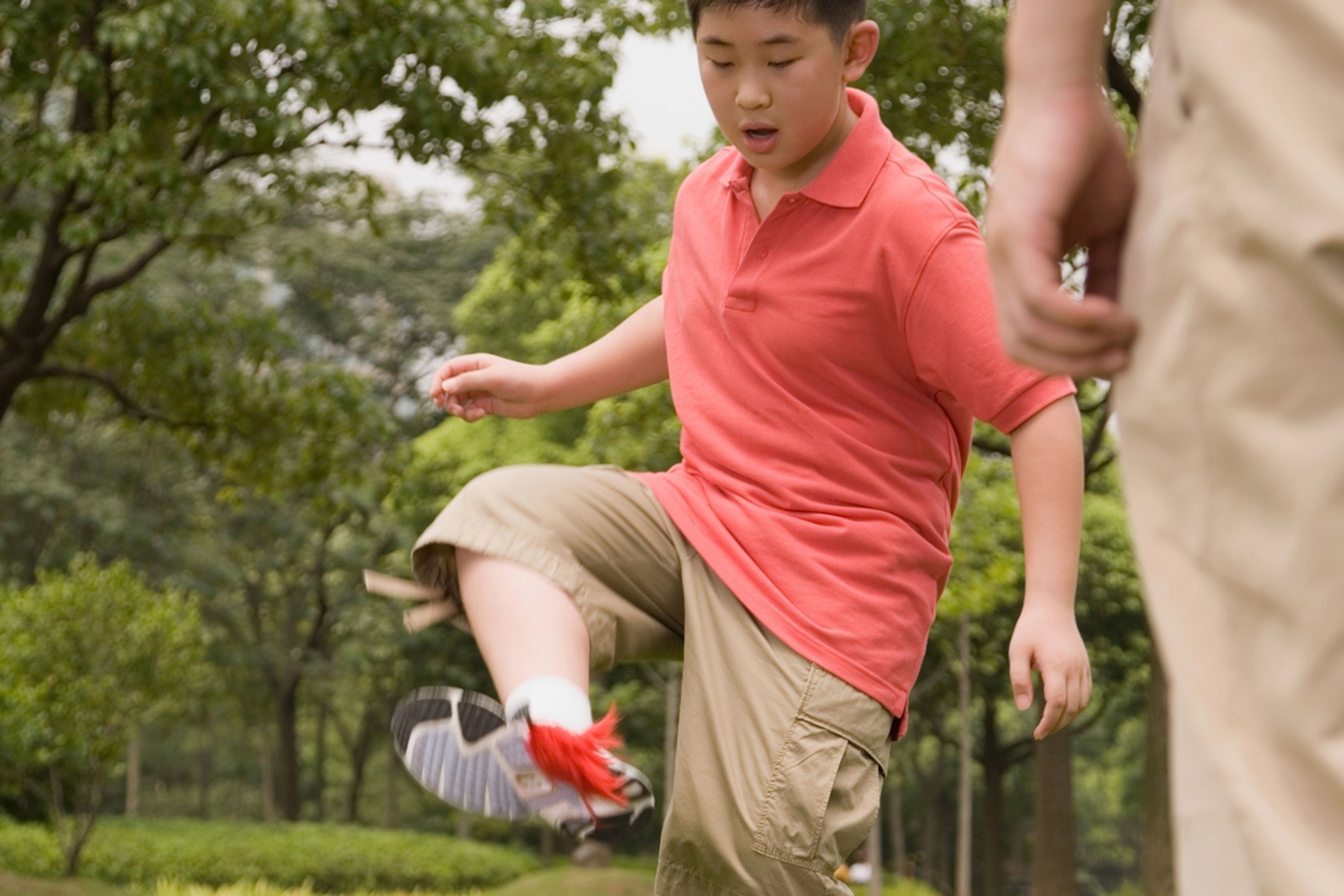
Jegi chagi, or Shuttlecock Kicking (South Korea): One origin story says this ancient Hacky-Sack-like game was a martial arts training tool. However it started, jegi chagi became a staple on Korean playgrounds. Kids kick a jegi—essentially a weighted badminton shuttlecock with tassels—in the air with one or both feet. Play one-on-one (most kicks without dropping wins) or pass the jegi in a circle. Make a simple jegi by stacking a few quarters at the bottom of a small plastic bag. Tightly close the bag just above the coins with a twist tie, then cut the top of the bag in strips to create tassels.
El Gato y El Raton, or Cat and Mouse (Costa Rica):This group circle game is a little-kid favorite. One child plays el gato (the cat); another is el raton (the mouse). The rest hold hands, forming a circle around the mouse. As the group skips and sings “El gato quiere sacar el raton” (the cat wants to get the mouse), the cat prowls outside the circle trying to tag the mouse. The players forming the circle raise and lower their arms to block the cat, and the mouse darts around to avoid being touched. When el gato “gets” its prey, start over with a new cat and mouse.
Luta de Galo, or Fighting Roosters (Brazil): This silly-fun balancing game pits two humans, not birds. Standing face-to-face, players tuck a bandana or cloth halfway into a back waistband or pocket, put their dominant hand on their chest (so they don’t use it), and start hopping on one leg. The first to capture their opponent’s cloth—without falling or putting both feet on the ground—wins.

Otedama, or Juggling Bags Game (Japan): Celebrate the Summer Olympics’ host country with a juggling game traditionally passed down from sobo (grandmother) to mago (grandchild). Played solo with five small ojami (beanbags)—often sewn from scraps of kimono silk—otedama can get crazy complicated as kids build skills. Begin with the basics. Kneel down behind the beanbags, toss one in the air, then use the same hand to quickly pick up another bag and catch the first. Keep going until you’re holding all five. Too easy? Toss up all the bags and catch ‘em on the back of your hand.




